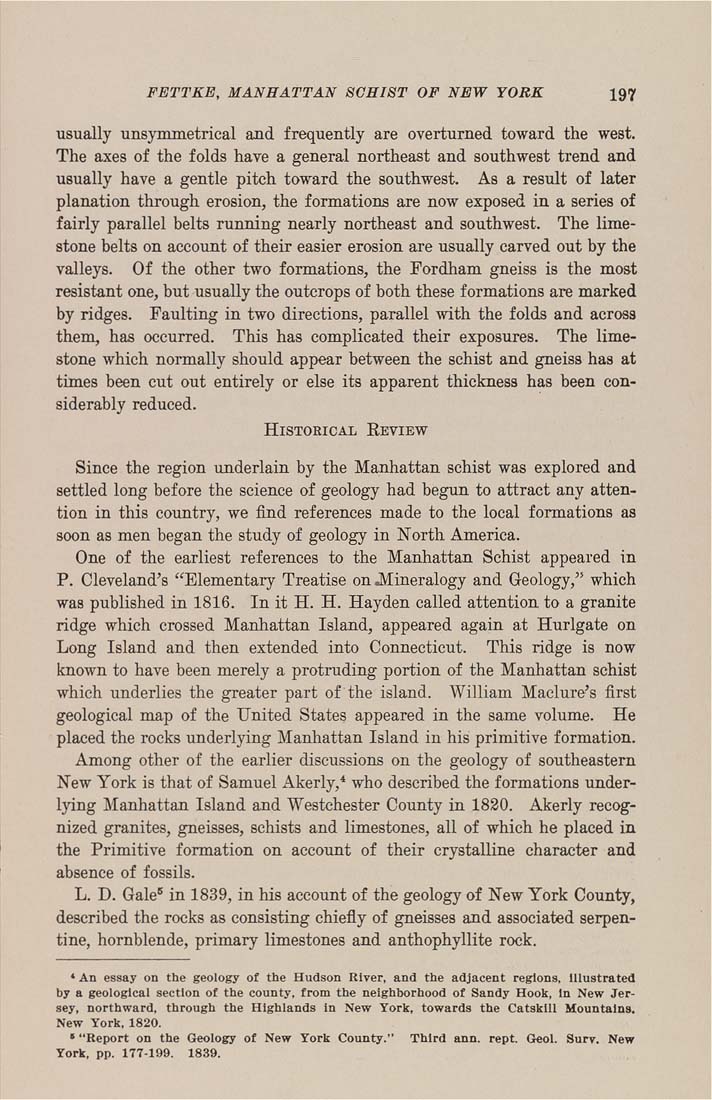FETTKE, MANHATTAN SCHIST OF NEW YORK 197
usually unsymmetrical and frequently are overturned toward the west.
The axes of the folds have a general northeast and southwest trend and
usually have a gentle pitch toward the southwest. As a result of later
planation through erosion, the formations are now exposed in a series of
fairly parallel belts running nearly northeast and southwest. The lime¬
stone belts on account of their easier erosion are usually carved out by the
valleys. Of the other two formations, the Fordham gneiss is the most
resistant one, but usually the outcrops of both these formations are marked
by ridges. Faulting in two directions, parallel with the folds and across
them, has occurred. This has complicated their exposures. The lime¬
stone which normally should appear between the schist and gneiss has at
times been cut out entirely or else its apparent thickness has been con¬
siderably reduced.
Historical Review
Since the region underlain by the Manhattan schist was explored and
settled long before the science of geology had begun to attract any atten¬
tion in this country, we find references made to the local formations as
soon as men began the study of geology in North America.
One of the earliest references to the Manhattan Schist appeared in
P. Cleveland's "Elementary Treatise on JVIineralogy and Geology," which
was published in 1816. In it H. H. Hayden called attention to a granite
ridge which crossed Manhattan Island, appeared again at Hurlgate on
Long Island and then extended into Connecticut. This ridge is now
known to have been merely a protruding portion of the Manhattan schist
which underlies the greater part of the island. William Maclure's first
geological map of the United States appeared in the same volume. He
placed the rocks underlying Manhattan Island in his primitive formation.
Among other of the earlier discussions on the geology of southeastern
New York is that of Samuel Akerly,* who described the formations under¬
lying Manhattan Island and Westchester County in 18S0. Akerly recog¬
nized granites, gneisses, schists and limestones, all of which he placed in
the Primitive formation on account of their crystalline character and
absence of fossils.
L. D. Gale'' in 1839, in his account of the geology of New York County,
described the rocks as consisting chiefly of gneisses and associated serpen¬
tine, hornblende, primary limestones and anthophyllite rock.
* An essay on the geology of the Hudson River, and the adjacent regions, Illustrated
by a geological section of the county, from the neighborhood of Sandy Hook, In New Jer¬
sey, northward, through the Highlands in New York, towards the Catskill Mountains.
New York, 1820.
' "Report on the Geology of New York County." Third ann. rept. Geol. Surv. New
York, pp. 177-199. 1839.
I
|








